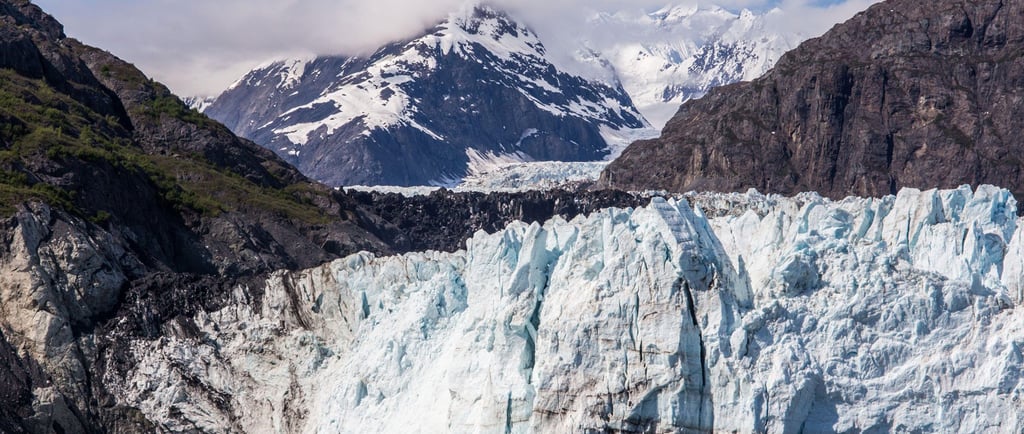How Fast Are India’s Himalayan Glaciers Melting?
Himalayan glaciers are retreating 14.9 m/year on average—Indus 12.7, Ganga 15.5, Brahmaputra 20.2. From 1975–2023, they lost 26 metres thickness, equal to a 9-storey building of ice, threatening rivers and lives.


On 18th August 2025, the Union Minister of State for Environment, Shri Kirti Vardhan Singh, made an important statement in the Lok Sabha. Replying to a question by MP Shri Sanatan Pandey, he revealed that the glaciers of the Hindu Kush Himalayan region are retreating at an alarming pace. According to the Ministry of Earth Sciences, these glaciers are shrinking on average by 14.9 metres every year.
To put this into perspective, it means the front edge of a glacier is moving backward each year because the ice is melting faster than snowfall can replenish it. The retreat, however, is not uniform. In the Indus basin, glaciers are retreating at 12.7 metres annually, in the Ganga basin at 15.5 metres, and in the Brahmaputra basin at a much higher 20.2 metres every year. Only the Karakoram glaciers show negligible change.
What is even more worrying is the cumulative loss. Between 1975 and 2023, the thickness of Indian Himalayan glaciers has reduced by nearly 26 metres of water equivalent. That is the same as losing the height of a nine-storey building made of solid ice. Imagine such a massive block of ice simply disappearing. This data makes it clear how global warming and climate change are reshaping our mountains.
How Glacier Retreat Leads to Dangerous Lakes
As glaciers retreat, they leave behind depressions that fill with meltwater, forming glacial lakes. At first glance, these lakes may appear beautiful, but they are often extremely unstable. Most of them are held back only by weak barriers of loose rock, soil, and ice.
When temperatures rise or heavy rainfall occurs, these natural dams can give way. The result is a Glacial Lake Outburst Flood (GLOF)—a sudden and destructive flood that rushes downstream with enormous force. Such floods carry boulders, mud, and debris, sweeping away everything in their path—villages, roads, bridges, and sometimes even entire ecosystems.
Disasters We Have Already Witnessed
India has seen such tragedies before. The Dharali disaster claimed over 150 lives, and experts believe it was triggered by a glacial lake burst. The Chamoli disaster of 2021, though officially classified as a rock and ice avalanche, is still widely described as a glacier-related event. Both incidents devastated local communities, destroyed infrastructure, and caused irreparable damage to the fragile Himalayan environment.
These are not isolated incidents—they are warnings of what lies ahead as our glaciers continue to shrink.
Climate Change Makes It Worse
One of the dangerous side effects of climate change is the increase in cloudbursts. Warmer air has the ability to hold more moisture. Once this limit is exceeded, the moisture is released suddenly, resulting in torrential rain within minutes. Such extreme rainfall events are becoming more common in the Himalayas.
Cloudbursts not only cause direct flooding but also increase the risk of glacial lakes bursting. When sudden rainfall adds pressure to already unstable lakes, the chances of catastrophic floods rise dramatically. This deadly combination of glacier retreat, unstable lakes, and extreme weather means that landslides and floods in the Himalayan region are becoming more frequent and more dangerous.
Why This Matters to All of Us
Many of us think of the Himalayas as distant snow-covered peaks, far away from our daily lives. But in reality, the Himalayas are our water towers. They feed the Ganga, Brahmaputra, and Indus rivers, which provide water to hundreds of millions of people across India and beyond. If the glaciers continue to retreat at this speed, the short-term result will be more floods and landslides, but in the long term, we face water shortages, declining river flows, and serious threats to agriculture and drinking water supply.
The Himalayan crisis is not just about mountains; it is about the survival of communities, ecosystems, and economies that depend on them.
